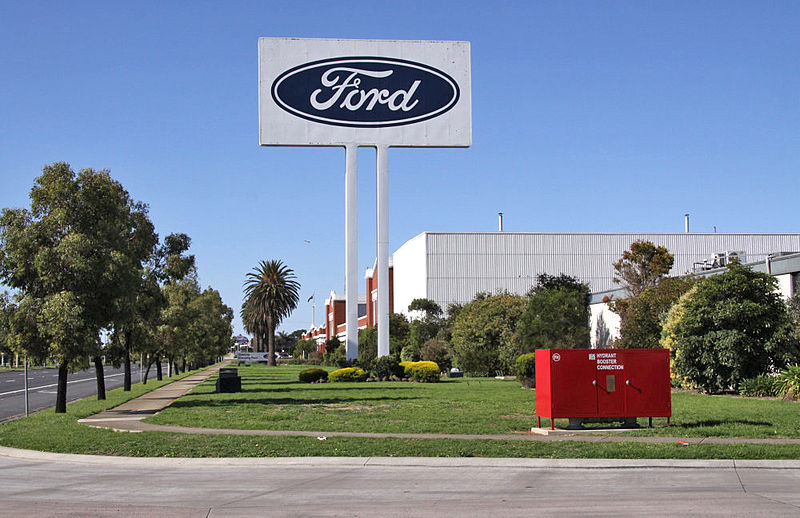As early as the beginning of the year, some experts warned that the car boom era in the US is close to completion, and in May the news became alarming. Huge stocks of cars in warehouses, forecasts of low prices for used cars, decline in sales and losses on car loans - all this led Ford to declare a significant reduction in staff.
3.9 million vehicles are now dusting at US warehouses. The number is very close to the historic maximum. Demand is also steadily declining, and prospects are not very bright. Moreover, because of the "stagnation" in the US automobile market, one can expect a real flow of cars that will enter the secondary market in the coming years, and prices, according to Morgan Stanley forecast, may fall by 50% in the next 5 years.
In fact, this means a full-fledged crisis in the US automobile market, and this looks like a harbinger of a recession.
Ford’s CEO Mark Fields is trying to keep profit and improve profitability, and he has already planned to cut expenses by $ 3 billion for this purpose. In general, given the slowdown in the market, only a reduction in costs can bring such a result.
In addition, value of Ford's shares for the entire three-year term has decreased anyway, and the company’s market cap significantly lagged behind Tesla and General Motors.
The company will cut 10% of the staff as a whole. Ford has 200 thousand employees around the world, half of whom work in the US, that is, Americans will still be fired.
Obviously, reduction of such a number of people will affect production volumes and, consequently, the industrial production in the United States. This all is happening amid rising Fed’s rates. If not a recession, then what is it?
This is a very clear signal about the problems. In addition to the fact that Ford’s actions are directly contradicting President Donald Trump’s plans, the company became a recipient of state aid in the midst of the financial crisis.
Ford asked for a loan of $ 9 billion, in exchange for a promise to spend $ 14 billion on new technologies. Yet, these loans were completely useless, at least from the current administration’s point of view.
December 2008 - the number of employees is 213 thousand people
December 2008 - Ford received a $ 9 billion loan from the government
May 2017 - the number of employees is 180 thousand people
Money is spent, people are left without work, and new technologies are very controversial topic, especially given success of Tesla or GM.
According to The Wall Street Journal, a strong job cuts in the US could provoke a political reaction because of the role that the car industry played during the campaign and at the beginning of Donald Trump's presidential term.
source: wsj.com
3.9 million vehicles are now dusting at US warehouses. The number is very close to the historic maximum. Demand is also steadily declining, and prospects are not very bright. Moreover, because of the "stagnation" in the US automobile market, one can expect a real flow of cars that will enter the secondary market in the coming years, and prices, according to Morgan Stanley forecast, may fall by 50% in the next 5 years.
In fact, this means a full-fledged crisis in the US automobile market, and this looks like a harbinger of a recession.
Ford’s CEO Mark Fields is trying to keep profit and improve profitability, and he has already planned to cut expenses by $ 3 billion for this purpose. In general, given the slowdown in the market, only a reduction in costs can bring such a result.
In addition, value of Ford's shares for the entire three-year term has decreased anyway, and the company’s market cap significantly lagged behind Tesla and General Motors.
The company will cut 10% of the staff as a whole. Ford has 200 thousand employees around the world, half of whom work in the US, that is, Americans will still be fired.
Obviously, reduction of such a number of people will affect production volumes and, consequently, the industrial production in the United States. This all is happening amid rising Fed’s rates. If not a recession, then what is it?
This is a very clear signal about the problems. In addition to the fact that Ford’s actions are directly contradicting President Donald Trump’s plans, the company became a recipient of state aid in the midst of the financial crisis.
Ford asked for a loan of $ 9 billion, in exchange for a promise to spend $ 14 billion on new technologies. Yet, these loans were completely useless, at least from the current administration’s point of view.
December 2008 - the number of employees is 213 thousand people
December 2008 - Ford received a $ 9 billion loan from the government
May 2017 - the number of employees is 180 thousand people
Money is spent, people are left without work, and new technologies are very controversial topic, especially given success of Tesla or GM.
According to The Wall Street Journal, a strong job cuts in the US could provoke a political reaction because of the role that the car industry played during the campaign and at the beginning of Donald Trump's presidential term.
source: wsj.com





